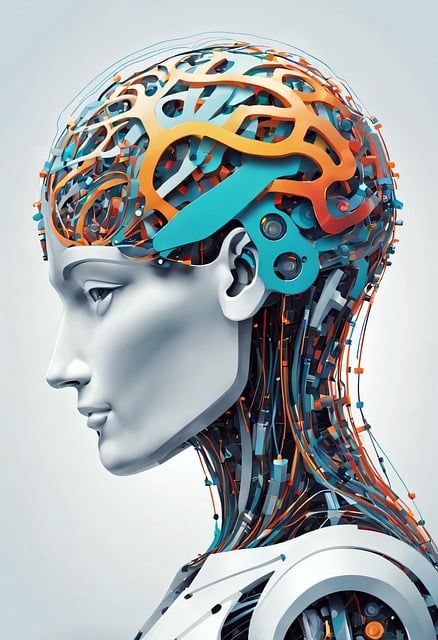Unlocking the Potential of AI Trading Bots: A Comprehensive Guide
In the rapidly evolving world of finance, the integration of artificial intelligence (AI) into trading practices is reshaping investment strategies and transforming the way traders operate. AI trading bots, designed to automate and enhance trading decisions, have emerged as powerful tools that adapt to market changes with remarkable speed and precision. In this article, I will delve into the intricacies of AI trading bots, their functionality, advantages and disadvantages, and their potential future in the financial sector.

Understanding AI Trading Bots
At their core, AI trading bots are algorithms that employ machine learning, statistical models, and historical data analytics to execute trades on behalf of users. They operate 24/7, tirelessly analyzing market conditions, identifying trading opportunities, and executing trades in real-time—actions that humans might find overwhelming due to the sheer volume of data and the necessity for quick decision-making.
How AI Trading Bots Work
These bots utilize various techniques and models to make informed decisions:
- Data Collection: AI trading bots gather vast amounts of historical and real-time data from various financial markets. This data serves as a foundation for their decision-making process.
- Data Analysis: Through technical analysis, bots assess trends, indicators, and patterns in market data. They often use algorithms such as regression analysis or neural networks to identify potential price movements.
- Executing Trades: Once a trading opportunity is identified based on predefined criteria, the bot automatically executes trades without requiring human intervention.
- Learning and Adapting: With continuous learning capabilities, AI trading bots can refine their strategies based on past performance, adapting to changing market conditions over time.
Types of AI Trading Bots
There are several types of AI trading bots, each catering to different trading strategies:
- Market-Making Bots: These bots create liquidity in the market by simultaneously placing buy and sell orders, profiting from the spread between prices.
- Trend-Following Bots: They identify and capitalize on upward or downward market trends, buying assets in a bull market and shorting in a bear market.
- Arbitrage Bots: These bots seek to exploit price discrepancies across different exchanges, buying low on one exchange and selling high on another.
- Sentiment Analysis Bots: By analyzing news articles, social media sentiment, and other external data, these bots predict market movements based on public sentiment or events that could influence market behavior.
Benefits of Using AI Trading Bots
Integrating AI trading bots into trading strategies comes with numerous advantages:
1. Speed and Efficiency
One of the most apparent benefits of AI trading bots is their speed. They can monitor multiple markets and execute trades in milliseconds, something that is virtually impossible for human traders. This speed is crucial in capitalizing on fleeting opportunities that arise in volatile markets.
2. Eliminating Emotional Bias
Emotion often leads to irrational decisions in trading. AI trading bots operate purely on data and predefined algorithms, thus eliminating the psychological influences that can cloud judgment. This could lead to more consistent and rational trading outcomes.
3. Backtesting Capabilities
Before deploying a trading strategy, bots can backtest their algorithms against historical data to assess performance, allowing traders to refine their strategies without risking actual capital.
Challenges and Limitations of AI Trading Bots
Despite their compelling advantages, AI trading bots come with challenges that potential users should be aware of.
Technical Limitations
Even the most sophisticated trading algorithms can struggle with extreme market conditions—flash crashes, sudden news events, or unprecedented market disruptions can result in substantial losses. Moreover, no algorithm is foolproof, and a bot’s performance may deteriorate over time as market dynamics evolve.
Dependence on Historical Data
AI trading bots heavily rely on historical data for their decision-making processes. If the market behaves differently in the future than it has in the past, these bots may fail to predict movements accurately, leading to suboptimal trading decisions.
Costs and Maintenance
While many trading bots offer a range of subscription plans, the initial setup, maintenance, and ongoing costs can accumulate, particularly for more sophisticated bots that require frequent updates and monitoring.

The Future of AI Trading Bots
The future of AI trading bots holds exciting potential, especially as technology continues to advance. As machine learning techniques improve, we may see the emergence of even more sophisticated bots capable of adapting in real-time to market changes.
Integration with Big Data and IoT
With the advent of big data analytics and the Internet of Things (IoT), AI trading bots may harness a broader range of data sources—including economic reports, geopolitical events, and real-time social media trends—to enhance their decision-making capabilities.
More Personalized Trading Strategies
In the future, I envision bots that can tailor trading strategies to individual investors’ preferences, risk tolerance, and market outlook. This personalization could democratize access to sophisticated trading strategies, benefiting amateur investors and professionals alike.
Final Thoughts
AI trading bots have undoubtedly changed the landscape of trading, offering innovative solutions for investors seeking efficiency, speed, and data-driven insights. While they present exciting opportunities for traders, they also entail complexities and challenges that must be navigated with care. As someone who has followed the developments in this field closely, I believe that the integration of AI in trading is just beginning, and continued advances in technology will only deepen its influence in the financial sector. Nonetheless, as with all investments, a balanced perspective, cautious optimism, and informed decision-making will be paramount for those wishing to harness the power of AI trading bots effectively.